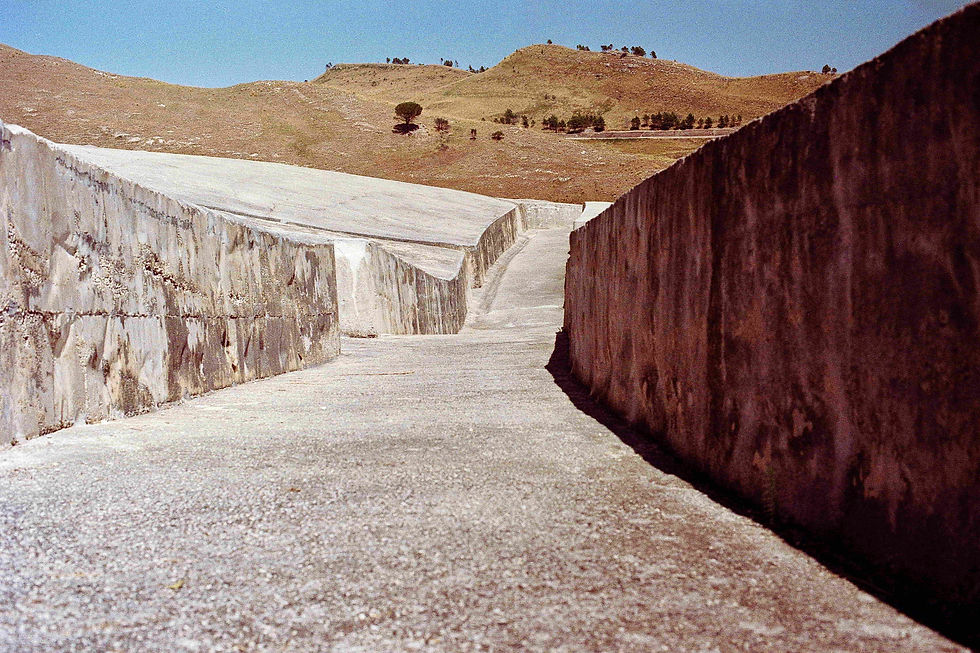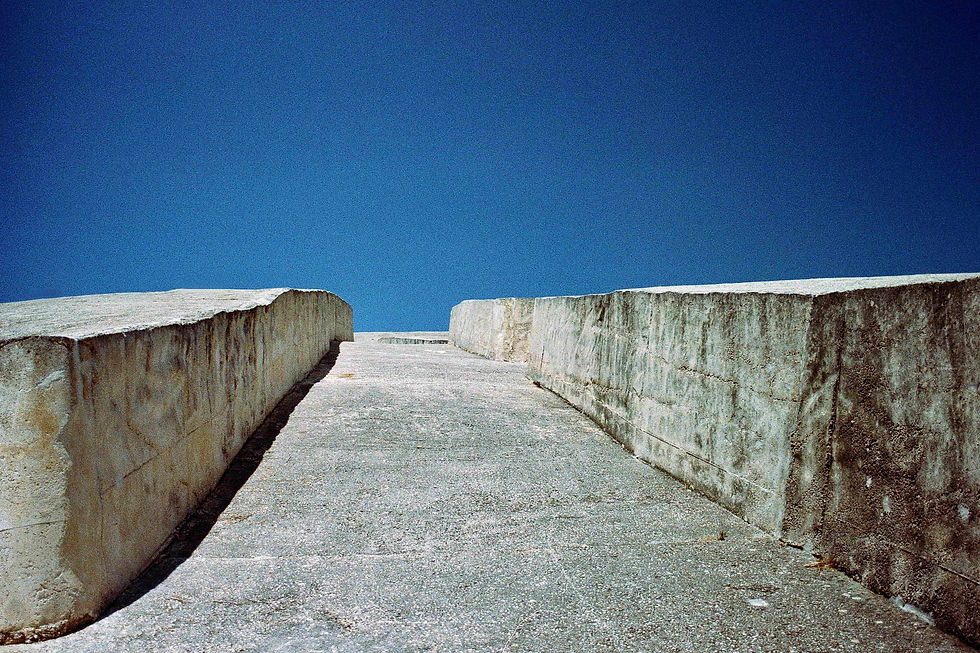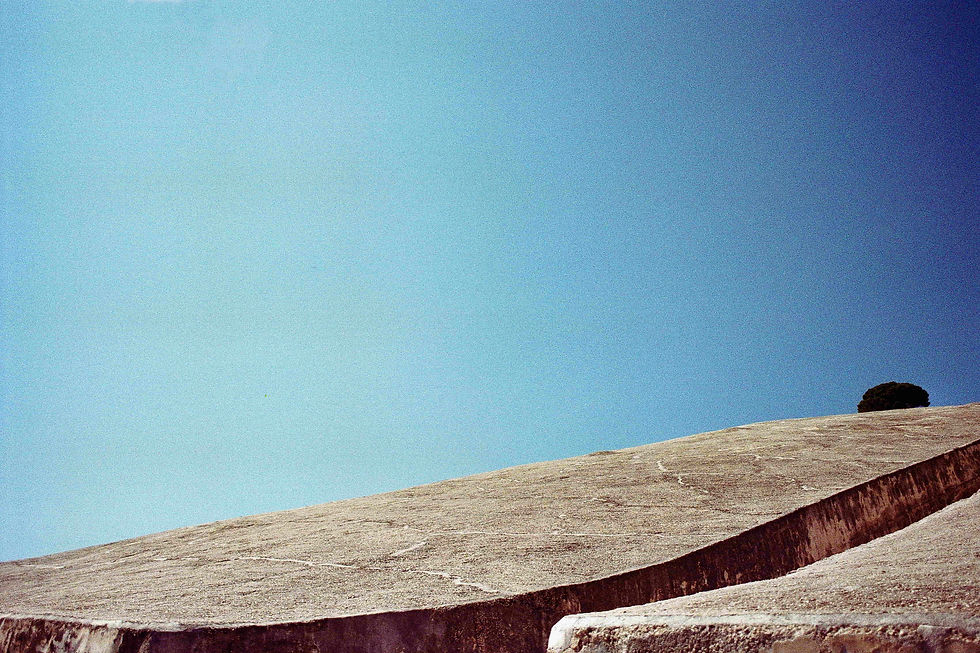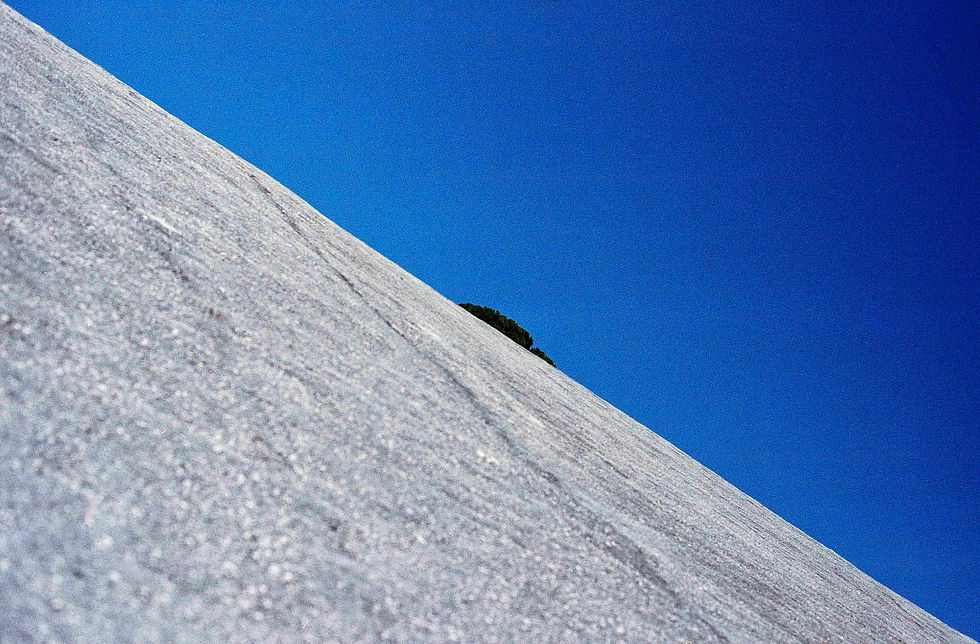Il Grande Cretto
(a pellicola)
Gibellina




















































trìttico



Alberto Burri, uno dei più importanti artisti italiani del XX secolo
Alberto Burri è stato uno dei più importanti artisti italiani del XX secolo, noto per il suo approccio sperimentale e materico all'arte. Tra le sue opere più celebri spicca il Grande Cretto, un'opera monumentale che rappresenta una delle espressioni più potenti di land art in Italia.
Nato nel 1915 a Città di Castello, di formazione medico, durante la Seconda Guerra Mondiale fu prigioniero in un campo di concentramento in Texas, dove iniziò a dipingere.
La sua arte si distacca dalla pittura tradizionale: usava materiali come sacchi, legno, plastica, ferro, creta e combustioni.
Il 15 gennaio 1968, la Valle del Belice fu colpita da un terribile terremoto che rase al suolo molti paesi, tra cui Gibellina. Invece di ricostruire sul luogo originale, il paese fu spostato altrove (Gibellina Nuova).
Il Grande Cretto, realizzato tra il 1985 e il 1989 (e completato solo nel 2015), è il risultato di una colata di cemento bianco che ricopre circa 85.000 m², seguendo la mappa del vecchio paese distrutto.
Le crepe, i cosiddetti cretti, simulano le strade originali e permettono ai visitatori di camminare letteralmente dentro la memoria del disastro.
È una tomba collettiva e simbolica, ma anche un'opera viva, dove il tempo, il sole, e il vento contribuiscono all’esperienza estetica.
Il Grande Cretto è visitabile liberamente.
È diventato un luogo di pellegrinaggio culturale, di riflessione sul rapporto tra arte, memoria, territorio e tragedia.
Visto dall’alto, ricorda una grande ferita bianca visibile anche dal satellite.
Alberto Burri, one of the most important Italian artists of the 20th century
Alberto Burri was one of the most important Italian artists of the 20th century, known for his experimental and tactile approach to art. Among his most celebrated works is the Grande Cretto, a monumental piece that stands as one of the most powerful expressions of land art in Italy.
Born in 1915 in Città di Castello, Burri was trained as a doctor. During the Second World War, he was held as a prisoner in a concentration camp in Texas, where he began painting.
His art diverged from traditional painting: he used materials such as sacks, wood, plastic, iron, clay, and fire.
On 15 January 1968, the Belice Valley was struck by a devastating earthquake that razed many towns to the ground, including Gibellina. Instead of rebuilding on the original site, the town was relocated (to what is now Gibellina Nuova).
The Grande Cretto, created between 1985 and 1989 (and only completed in 2015), is the result of a white concrete casting that covers approximately 85,000 square metres, following the layout of the old destroyed town.
The cracks, so called cretti, mimic the original streets, allowing visitors to literally walk through the memory of the disaster.
It is a symbolic collective tomb, but also a living artwork, where time, sunlight, and wind contribute to the aesthetic experience.
The Grande Cretto is open to the public.
It has become a site of cultural pilgrimage and a place for reflection on the relationship between art, memory, landscape, and tragedy.
Seen from above, it resembles a vast white scar, visible even from satellite imagery.

